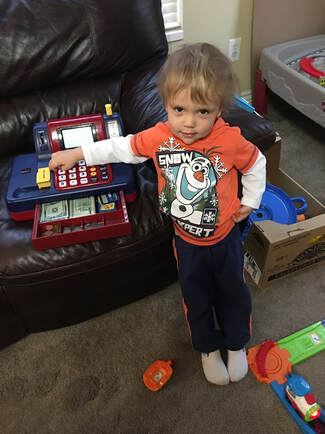 Perusing the search engine results for “allowance for kids” reveals something telling: The top results can’t seem to agree with each other. Some finance articles quote experts or outspoken parents hailing an allowance, stating it teaches kids financial responsibility. Others argue that simply awarding an allowance (whether in exchange for doing chores around the house or not) instills nothing in children about managing money. They say that having an honest conversation about money and finances with your kids is a better solution. According to a poll, the average allowance for kids age 4 to 14 is just under $9 per week, about $450 per year. By age 14, the average allowance is over $12 per week. Some studies indicate that, in most cases, very little of a child’s allowance is saved. As parents, we may not have needed a study to figure that one out – but if your child is consistently out of money by Wednesday, how do you help them learn the lesson of saving so they don’t always end up “broke” (and potentially asking you for more money at the end of the week)? There’s an app for that. Part of the modern challenge in teaching kids about money is that cash isn’t king anymore. Today, we use credit and debit cards for the majority of our spending – and there is an ever-increasing movement toward online shopping and making payments with your phone using apps like Apple Pay, Android Pay, or Samsung Pay. This is great for the way we live our modern, fast-paced lives, but what if technology could help us teach more complex financial concepts than a simple allowance can – concepts like how compound interest on savings works or what interest costs for debt look like? As it happens, a new breed of personal finance apps for families promises this kind of functionality. FamZoo is popular, offering prepaid cards with a matching family finance app for iOS and Android. Prepaid cards are a dime a dozen but FamZoo’s card and app do much more than just limit spending to the prepaid amount. Kids can earn interest on their savings (funded by parents), set budgets according to categories, monitor their account activity with useful charts, and even borrow money – complete with an interest charge. Sounds a bit like the real world, doesn’t it? FamZoo can be as simple or as feature-packed as you’d like, making it a good match for kids of any age. Money habits are formed as early as age 7. If an allowance can teach kids about saving, compound interest, loan interest, and budgeting – with a little help from technology – perhaps the future holds a digital world where the two sides of the allowance debate can finally agree. As to whether your kids’ allowance should be paid upon completion of chores or not… Well, that’s up to you and how long your Saturday to-do list is! Perusing the search engine results for “allowance for kids” reveals something telling: The top results can’t seem to agree with each other.Some finance articles quote experts or outspoken parents hailing an allowance, stating it teaches kids financial responsibility. Others argue that simply awarding an allowance (whether in exchange for doing chores around the house or not) instills nothing in children about managing money. They say that having an honest conversation about money and finances with your kids is a better solution. According to a poll, the average allowance for kids age 4 to 14 is just under $9 per week, about $450 per year. By age 14, the average allowance is over $12 per week. Some studies indicate that, in most cases, very little of a child’s allowance is saved. As parents, we may not have needed a study to figure that one out – but if your child is consistently out of money by Wednesday, how do you help them learn the lesson of saving so they don’t always end up “broke” (and potentially asking you for more money at the end of the week)?
0 Comments
Leave a Reply. |
Meet the author:
|
Navigation |
Connect With UsShare This Page |
Contact UsFront Range Insurance Solutions
215 Cheesman St, Suite M, Erie, CO 80516 (720) 389-7651 Click Here to Email Us |
Affiliated with DCI |
Location |
Website by InsuranceSplash


 RSS Feed
RSS Feed
